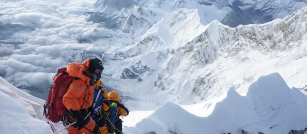Auschwitz Tour: A journey through history
Auschwitz-Birkenau was of the largest and deadliest concentration camps in Europe during World War II. It was operated by Nazi Germany in the occupied Polish city of Oswiecim. The camp served as an extermination camp and a killing center, where more than 1 million people – mostly Jews – were systematically murdered. The victims were subjected to horrific conditions and cruel medical experiments. Many were killed in gas chambers, while others were burned in ovens or died of starvation, exhaustion, and disease. Auschwitz remains a powerful symbol of the Holocaust and a reminder of the cruelty and inhumanity of which humans are capable.

Table of contents
A visit to the memorial
Auschwitz-Birkenau State Museum is open to visitors today. The memorial has various permanent and temporary exhibitions and provides guided tours in English and other languages. The museum also organizes educational programs and activities, as well as cultural events. Visiting the museum is free of charge, although donations are welcome. You have to pay for engaging an educator guide and renting a headset system.
When organizing a trip to the museum, it is worth considering transportation. Tourists usually choose to stay overnight in Krakow or other nearby towns. In this case, it is best to opt for a professional driver and a comfortable minibus. Auschwitz tours with Krakowdirect are second to none.
The separate parts of the extermination camp
At its awful peak, the Auschwitz complex had over 40 sub-camps and three main camps, which included Auschwitz I, Auschwitz II-Birkenau, and Auschwitz III-Monowitz. The complex covered over 40 square kilometers (15 square miles) and was the largest of the Nazi concentration and death camps.

- Auschwitz I was the first and original camp of Auschwitz. It was an administrative center as well as a killing center. Built in 1940, it was initially a concentration camp for Polish political prisoners. As the war progressed, it was expanded to include Jews, Gypsies, homosexuals, and other “undesirables”. It was divided into two sections, one for men and one for women. Men were housed in a brick building known as the “barracks”, while women were housed in the “family camp”. The barracks were made up of long, narrow, windowless rooms with three-tiered wooden bunks. Each room was filled with as many as 200 prisoners at any given time. The prisoners were given thin mattresses and blankets, but there was very little else in the barracks. There were no sanitary facilities and the only water came from a foul-smelling well. The family camp was similar to the barracks but larger and more spacious. It was divided into several smaller units, each of which housed a family. The families were given food, clothing, and medical care, although the quality of these items was far below what the prisoners would have received in a normal civilian hospital.
- Auschwitz II-Birkenau was the largest of the three camps. It was constructed in 1942 as an extermination camp and was the destination for most of the prisoners sent to Auschwitz. It was divided into two parts: one for Jews and one for Gypsies. Jews were sent to the main camp and Gypsies to the Gypsy camp. The main camp was made up of hundreds of barracks surrounded by barbed wire fences and guard towers. The barracks were filled with hundreds of prisoners, who were often packed into the rooms like sardines. The rooms had only a single light bulb, a single bunk bed, and a single bucket for a toilet. The Gypsy camp was even worse. It was a collection of tents and shacks, with no running water or electricity. The prisoners had to sleep in the dirt and were subjected to inhumane treatment by the guards.
- Auschwitz III-Monowitz was the third and last part of Auschwitz. It was a labor camp, where prisoners were forced to work in factories or to construct new buildings. The conditions in the camp were even worse than those in the main camp and the gypsy camp. The prisoners were forced to work long hours in dangerous conditions and were given barely enough food to stay alive.
Auschwitz as a reminder of the atrocities of the past

The main part open for tourists at the museum is the permanent exhibition, which consists of three sections. The first one focuses on the history of the Auschwitz and Birkenau camps, from their creation in 1940 to their liberation in 1945. The second section focuses on the victims of the Holocaust, including their stories, experiences, and the impact of their suffering. The third section in turn is dedicated to the memory of the prisoners and is filled with photographs, artifacts, and documents that tell their story.
In addition to the permanent exhibition, there are also many temporary ones here. They explore topics such as Jewish culture and World War II. They also feature works of art, film, and other media that help to bring the Holocaust to life. The museum also has a number of educational programs, such as lectures and workshops, that aim to educate visitors about the Holocaust and its victims. Moreover, the memorial hosts special events and activities throughout the year, such as remembrance ceremonies and book readings.
A journey from the darkness to light
A visit to Auschwitz is a haunting journey through one of the darkest chapters in human history.
It is also a journey that no one should miss, as it provides a unique opportunity to visit a place of human suffering and to witness a powerful reminder of the past. Through this tour, tourists gain a better understanding of the events that took place in this place and the impact they had on millions of lives. As visitors leave the camp, they are left with a sense of sorrow and hope, knowing that they have experienced something that will stay with them forever.
Remember, never travel without travel insurance! And never overpay for travel insurance!
I use HeyMondo. You get INSTANT quotes. Super cheap, they actually pay out, AND they cover almost everywhere, where most insurance companies don't (even places like Central African Republic etc!). You can sign-up here. PS You even get 5% off if you use MY LINK! You can even sign up if you're already overseas and traveling, pretty cool.
Also, if you want to start a blog...I CAN HELP YOU!
Also, if you want to start a blog, and start to change your life, I'd love to help you! Email me on johnny@onestep4ward.com. In the meantime, check out my super easy blog post on how to start a travel blog in under 30 minutes, here! And if you just want to get cracking, use BlueHost at a discount, through me.
Also, (if you're like me, and awful with tech-stuff) email me and my team can get a blog up and running for you, designed and everything, for $699 - email johnny@onestep4ward.com to get started.
Do you work remotely? Are you a digital nomad/blogger etc? You need to be insured too.
I use SafetyWing for my digital nomad insurance. It covers me while I live overseas. It's just $10 a week, and it's amazing! No upfront fees, you just pay week by week, and you can sign up just for a week if you want, then switch it off and on whenever. You can read my review here, and you can sign-up here!













 As you know, blogging changed my life. I left Ireland broke, with no plan, with just a one-way ticket to Thailand
and no money. Since then, I started a blog, then a digital media company, I've made
more than $1,500,000 USD, bought 4 properties and visited (almost) every country in the world. And I did it all from my laptop as I
travel the world and live my dream. I talk about how I did it, and how you can do it too, in my COMPLETELY FREE
Ebook, all 20,000
words or so. Just finish the process by putting in your email below and I'll mail it right out to you immediately. No spam ever too, I promise!
As you know, blogging changed my life. I left Ireland broke, with no plan, with just a one-way ticket to Thailand
and no money. Since then, I started a blog, then a digital media company, I've made
more than $1,500,000 USD, bought 4 properties and visited (almost) every country in the world. And I did it all from my laptop as I
travel the world and live my dream. I talk about how I did it, and how you can do it too, in my COMPLETELY FREE
Ebook, all 20,000
words or so. Just finish the process by putting in your email below and I'll mail it right out to you immediately. No spam ever too, I promise!
